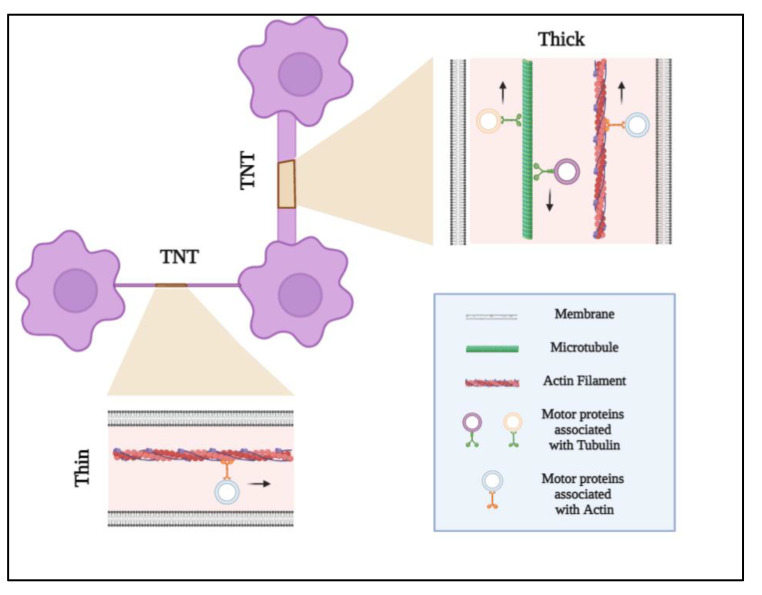Figure 1.
Tunneling nanotube (TNT) structures. TNTs are heterogeneous, transient, and highly dynamic nanotubular structures that connect cells over short or long distances. TNTs can be classified as two types: (1) short (100–200 nm), thin (≤0.7 μm), and dynamic type I nanotubes are made of actin and formed by cells exploring their surroundings to make cell–cell contact; (2) long (1 μm), thick (≥0.7 μm), and more stable type II nanotubes are made of tubulin and actin filaments. TNTs transport cellular organelles such as mitochondria and lysosomes, as well as viruses, intra-cellular vesicles, and electrical signals. The mechanism of cargo transport can be unidirectional or bidirectional. Type I nanotubes (actin-based) are characterized by a unidirectional transport mechanism in which cellular components are anchored and driven by the directional actin polymerization at one end. The hallmark of type II nanotubes is bidirectional delivery, in which cargo is moved by microtubule-based molecular motor proteins.

